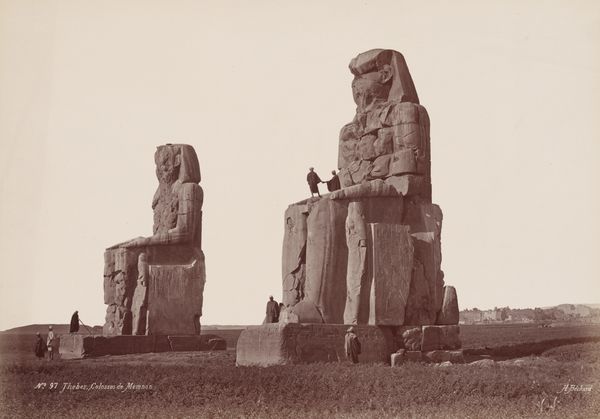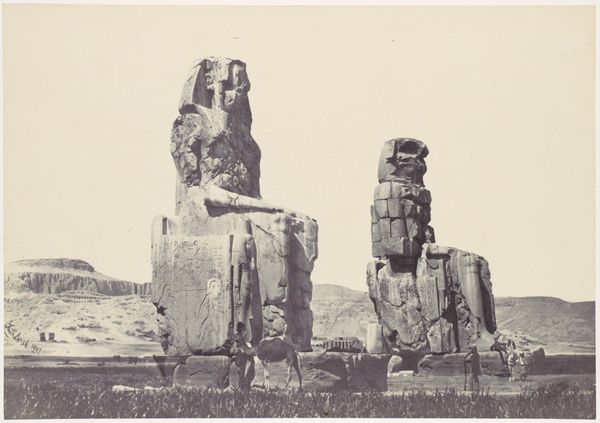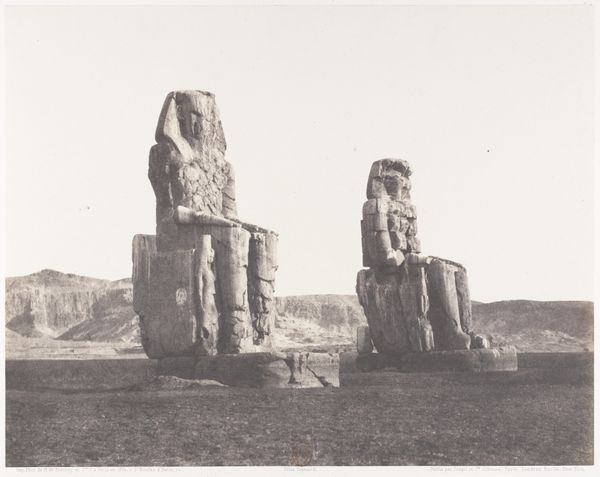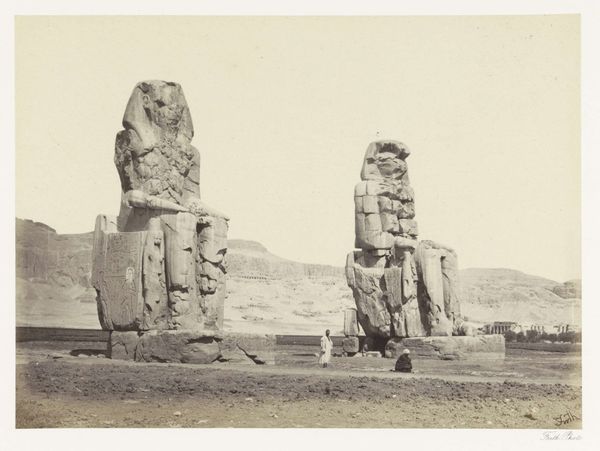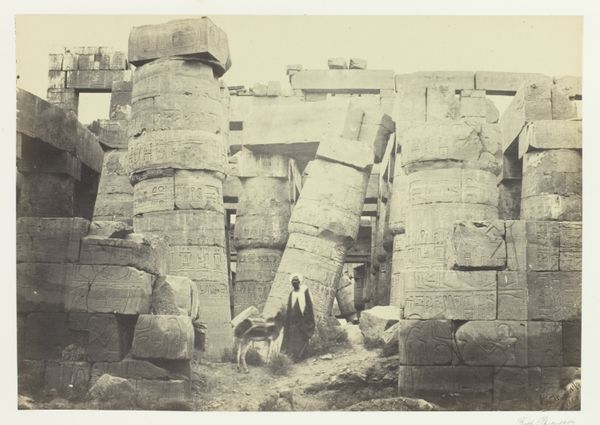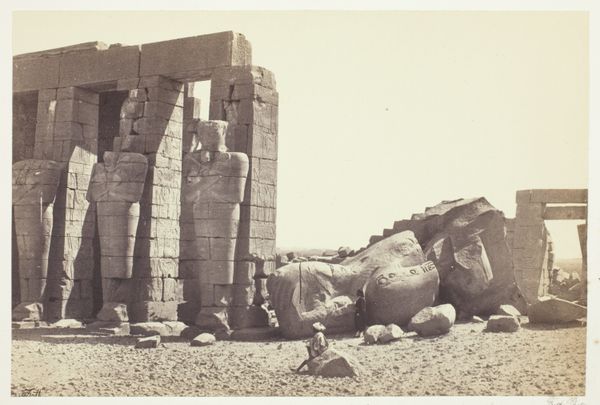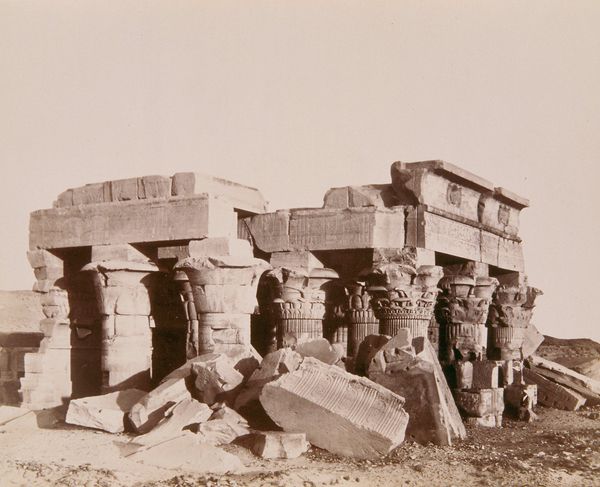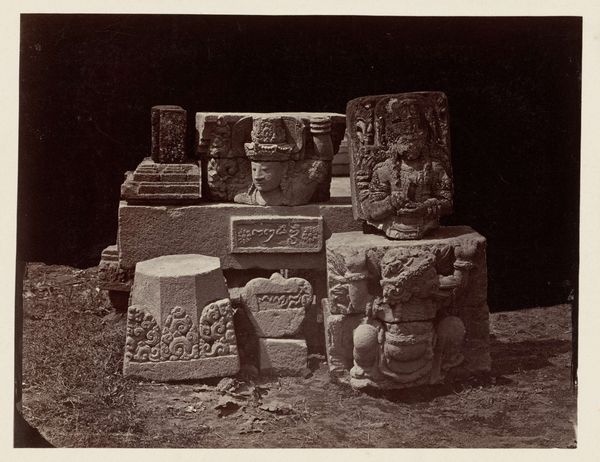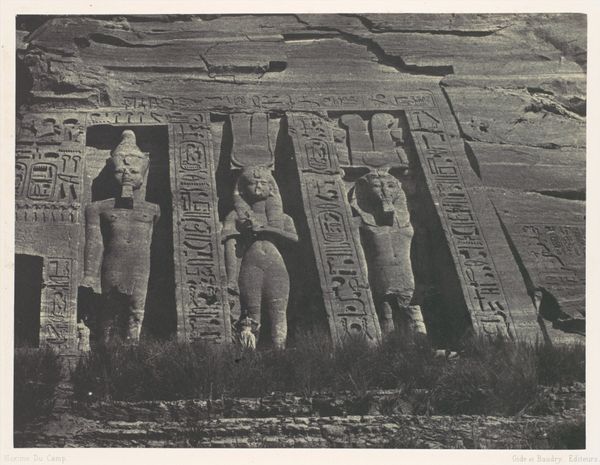
photography, sculpture, site-specific
#
sculpture
#
landscape
#
ancient-egyptian-art
#
historic architecture
#
photography
#
ancient-mediterranean
#
sculpture
#
site-specific
#
history-painting
#
ruin
#
statue
Dimensions: image/sheet: 36.8 × 47.3 cm (14 1/2 × 18 5/8 in.) mount: 53.8 × 73.8 cm (21 3/16 × 29 1/16 in.)
Copyright: National Gallery of Art: CC0 1.0
Francis Frith made this albumen print, "The Statues of the Plain, Thebes," using a process that was relatively new at the time. This photographic technique involved coating paper with a layer of egg white and silver nitrate, rendering a very smooth surface that would yield a sharp, detailed image. Looking at the print, we see the monumental statues looming over the landscape, their surfaces worn by centuries of exposure. What’s easy to miss is the extraordinary amount of labor that went into creating this image. Frith didn't just point and shoot; he had to transport bulky equipment across continents, prepare his chemicals on site, and then carefully develop the prints in makeshift darkrooms. His photographs became a kind of mass-produced commodity, feeding a Victorian appetite for images of faraway lands, and in the process, he shaped how the world saw Egypt. Appreciating this print means recognizing the work that went into it, and understanding it as an object produced in a specific time and place, enmeshed in the social and economic forces of the 19th century.
Comments
No comments
Be the first to comment and join the conversation on the ultimate creative platform.
